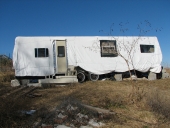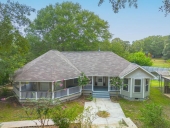




 1
1




 1
1




Iterations are fine, we don't have to be perfect
My 2nd Location:Florida HardinessZone:10 AHS:10 GDD:8500 Rainfall:2in/mth winter, 8in/mth summer, Soil:Sand pH8 Flat
 1
1











List of Bryant RedHawk's Epic Soil Series Threads We love visitors, that's why we live in a secluded cabin deep in the woods. "Buzzard's Roost (Asnikiye Heca) Farm." Promoting permaculture to save our planet.




William Bronson wrote: Maybe skip the greenhouse and just build a room out of foam insulation panels?
Something with a foil face might work.
Any highly insulated space seems preferable to a hoop house, since you plan on using grow lights anyway.
I hate to say it,but you might want to consult weed growing forums. Your set up seems pretty similar to the average grow house.




S Bengi wrote:Based on your estimates.
How what will your revenue/harvest/price per lbs look like in year1, year2, year3, year4
When it what your operating cost (heating, electric, broken bulbs, transportation, insurance, fees, cellphone, gas, dead plants, helpers salary, advertisement) look like in year2, year3, year4
What will your start up cost look like for and what will your operating cost for year1 look like?
What are some of the benefits of growing it in
1) a greenhouse vs outside,
2) Soil-less media
3) LED lighting
Do you know of anyone doing LED hops in Netherlands or anywhere? What can we learn from them?
I personally know people growing greens/lettuce in completely closed insulated shipping containers. The cycle only takes 4weeks, and it's in the city so they have a market that will pay a premium price, its jut leaves so no extra energy for seed/flower/fruit production.
 2
2




"Study books and observe nature; if they do not agree, throw away the books." ~ William A. Albrecht




Skandi Rogers wrote:Since this is obviously going to be a commercial project a few comments.
How will you compete (money wise) with conventional grown hops? People who do not need to throw huge amounts of energy at their product?
Is there are market for artificially grown hops? It would seem to me that small firms often want local "natural" products and may not consider your idea as compatible I would assume that with such a small area you will not be selling wholesale to the larger brewers.
How possible is it to light hops? They grow 10-15ft tall, growing them any shorter would reduce yields as less volume
Hops are perennial plants that take several years to get to full production, how does that work in a hydroponic setting? What happens over winter when the plants are dormant.
So A quick look around tells me that a half ton an acre is a good yield of dried hops (remember you have to dry them too) you'd be using 1/6th of an acre or less. so 1100 pounds per acre is the target figure, the article I was reading said first and second year probably 10% of that, and yields down to 400lb an acre are not uncommon, Lets assume as it's indoors you can manage to avoid low yields once things get going. These figures would suggest you could get if you hired the entire barn 183lb of dried hops.. at $2 a pound I'm not seeing how this will make any money (I may have some figures wrong, lb are not my strong point) Website on economic considerations before planting hops




James Freyr wrote:I'm not trying to be a nay-sayer, but why spend all the money on lights, then on electricity, when we have the sun, which is full spectrum, more intense, and free? If you must grow hydroponically, why not outdoor hydroponics? Or in a regular green house utilizing sunlight?
 1
1




Bryant RedHawk wrote:I must echo Skkandi's thoughts here. First off hops is all about flavor for the beer, if your hops don't meet the standard for what ever variety it is you grow, you will have no buyers.
Costs for conventional, out door growing is fairly low when compared to what it will costs to do it hydroponically in a green house.
Are you aware that hops plants can grow to over 40 feet? Normally hops are planted next to 30 foot tall wire trellises and the whole plant is cut down at harvest time.
Now if you are wanting to just grow some for your own use, no worries. but if you plan to make money from this venture, you might want to get better educated on growing hops as a commercial crop.
My old friend that grows hops plants out 1000 acres and 500 of that acreage is what covers the cost of his operation including water costs.


 2
2




Iterations are fine, we don't have to be perfect
My 2nd Location:Florida HardinessZone:10 AHS:10 GDD:8500 Rainfall:2in/mth winter, 8in/mth summer, Soil:Sand pH8 Flat
 3
3




Creating sustainable life, beauty & food (with lots of kids and fun)
 2
2




 3
3




A human being should be able to change a diaper, plan an invasion, butcher a hog, conn a ship, design a building, write a sonnet, balance accounts, build a wall, set a bone, comfort the dying, take orders, give orders, cooperate, act alone, solve equations, analyze a new problem, pitch manure, program a computer, cook a tasty meal, fight efficiently, die gallantly. Specialization is for insects.
-Robert A. Heinlein








Mario Lazetti wrote:Hi,
I am determined to start growing hydroponic hops this spring to sell to breweries. I have looked at converting indoor warehouse space, constructing greenhouses, and now am looking at renting a large barn which is not insulated. The barn has 20 feet ceilings, roof vents, and a deep gravel floor with water and electricity, the barn is roughly 90x160 with doors on each end, and I can rent anywhere from 3-8k square feet.. My thought is that I will want to create a boxed, hoop topped room inside the barn. For framing and insulation the plan is to use chain link top post cemented into the ground for walls and bent at the top into hoops wrapped in greenhouse poly. My plan is to build the greenhouse just near the wall (what side of barn?) and place straw bales between barn wall and the poly wall. I am hoping that if I can figure out proper fan circulation that this will provide a well enough insulated and contained environment to grow these hops. If I can source it I am trying to cover the gravel with wood chips as an additional insulation layer and some natural co2 emission.
Attached is a sun map of the barn - I am having difficulty figuring out what area I should try and claim. I figure that I can open the doors in the summer for additional ventilation but in the winter will want to be far away from the N-E door as that is most likely to be opened by others. If you're wondering about lights, yes I plan to have a lot of LEDs. Full spectrum white LED corn cob lights are reasonably priced enough now that it is feasible for a person to try to make a greenhouse inside a dark building.
After looking at so many different options, I am hoping that this greenhouse inside a barn can work. Please give me some feedback on my plan or follow along this thread to see how the progress goes.

|
Their achilles heel is the noogie! Give them noogies tiny ad!
The new kickstarter is now live!
https://www.kickstarter.com/projects/paulwheaton/garden-cards
|







